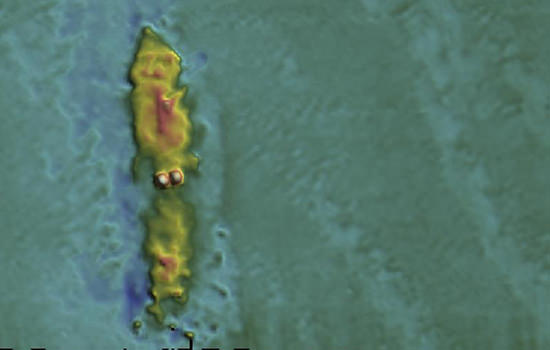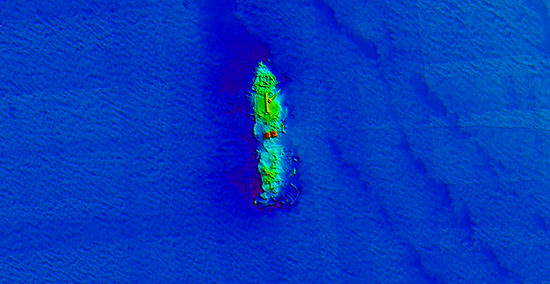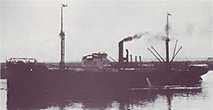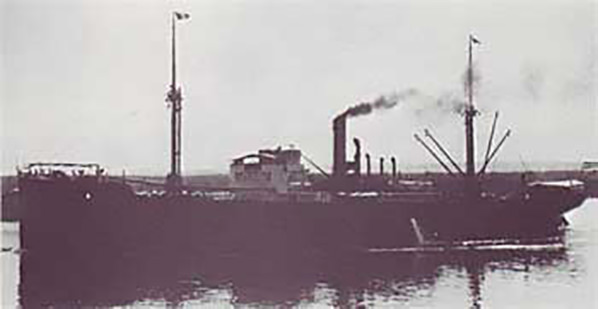Suloide
Ship Stats
Location: 34°32'41.24"N, 76°53'41.96"W (34.54479, -76.89499)
Depth: 65 feet
Vessel Type: Freighter
Length: 338.1 feet Breadth: 48.2 feet
Gross Tonnage: 3,235 Cargo: Manganese Ore
Built: 1920, Neptun Werft A.G., Rostock, Germany
Hull Number: 357 Port of Registry: Rio de Janeiro, Brazil
Owner: Lloyd Brasileiro (Companhia De Navegacão), Rio de Janeiro, Brazil
Lloyd's Register Details: Steel hull, two decks, triple expansion three cylinder engine, one screw
Former Names: Maceio (Hamburg-Sudanmerikanische Steamboat Co., 1937-1941); Amassia Hamburg-America Line, 1921-1937)
Date Lost: March 26, 1943
Sunk By: Collision Survivors: No loss reported
Data Collected on Site: Side scan and multibeam sonar
Significance: Casualty of World War II's Battle of the Atlantic
Wreck Site
The Suloide shipwreck is located in about 65 feet of water and visibility and site conditions vary frequently. Sinking upright, Suloide was considered a navigational hazard; therefore, in 1944, it was blasted with dynamite and wire-dragged. Although Suloide was leveled, a distinctive outline of the wreck site remains. Two large boilers appear to be located amidships of the wreck and stand out as the highest relief within a large debris field.


Historical Background

Suloide was a Brazilian cargo ship built in 1920 and originally named Amassia. The vessel operated under German control through the 1920s and 1930s, until it was sold in 1937. As war broke out, the vessel was sold to Lloyd Brasileiro of Brazil and renamed Suloide, carrying freight along the United States' East Coast.
On March 26, 1943, Suloide was loaded with a cargo of manganese ore from Trinidad and was headed to New York, New York. As Suloide made its way along the coast alone and unarmed, it struck the wreck of Ario causing a large gash in its hull. The hold quickly filled with water and the vessel began to sink, drifting about a mile before it finally slipped beneath the water.
Suloide was considered a navigational hazard, and to make sure that another accident did not happen, the USCGC Vigilant (WPC-15) blasted the remains of Suloide and Ario, dropping over 20 tons of dynamite over the sites. By May 24, 1944, demolition was completed having knocked the hull and superstructure down to a level safe for navigation. The Suloide was also wire-dragged in 1944.


